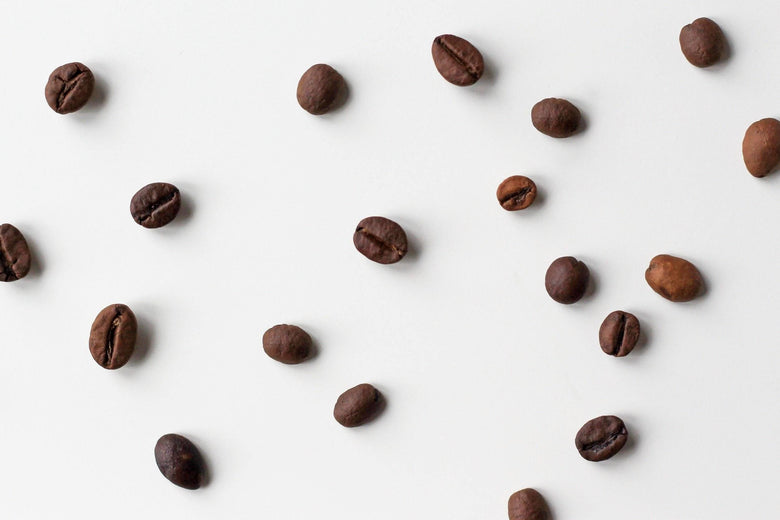How to Store SOE Single Origin Espresso for Maximum Freshness
Coffee Beans Uncovered: Discovering the Tricks of Coffee and Blended Coffee Beans
When you consider coffee, what comes to mind? Is it the rich aroma of espresso or the complexity of a well-crafted mix? Understanding the nuances of coffee beans can change your experience. Each selection, from Arabica to Robusta, holds its very own tricks. As you discover better, you'll uncover how these beans shape tastes and impact sustainability. What might you discover about your next cup?
The Beginnings of Coffee: A Historic Viewpoint
Although coffee is now a staple in coffee society worldwide, its beginnings trace back to the very early 20th century in Italy. In 1901, Luigi Bezzera patented the very first coffee maker, aiming to make coffee faster than standard techniques.
Understanding Coffee Beans: Varieties and Features
When you assume regarding espresso, it's important to identify the different bean ranges and their distinct flavors. Each kind brings an unique character to your mug, influenced by factors like roast degrees. Comprehending these components can boost your espresso experience substantially.
Espresso Bean Varieties
As you check out the world of espresso, you'll quickly find that not all beans are produced equal; each range brings its very own distinct tastes and characteristics to your mug. One of the most popular kinds consist of Arabica and Robusta. Arabica beans are known for their smooth, nuanced tastes and reduced caffeine web content, making them a preferred amongst coffee aficionados. On the various other hand, Robusta beans pack a more powerful strike with greater caffeine and an extra bitter preference, usually favored in blends for their crema-enhancing top qualities. You might also come across specialized beans like Liberica and Excelsa, which use unique profiles and are much less usual. Each range offers something various, so trying out will certainly help you discover your excellent coffee.
Flavor Profiles Described
Recognizing the taste accounts of various coffee beans can elevate your coffee experience. Each bean variety provides special qualities that influence fragrance, mouthfeel, and preference. Arabica beans often present a sweeter, more complicated taste with hints of fruit and floral notes, while Robusta beans tend to be bolder, with nutty and natural touches.
When you check out single-origin beans, you may find unique local tastes-- Central American beans might be intense and citrusy, whereas Italian blends usually provide rich, chocolatey notes.
Roast Degrees Effect
Roast levels play a crucial role in shaping the taste and fragrance of espresso beans, affecting your overall coffee experience. With light roasts, you'll discover intense level of acidity and much more pronounced fruity notes. As you relocate to tool roasts, you'll take pleasure in a balanced profile that showcases sweetness and intricacy. Dark roasts, on the various other hand, often present abundant, vibrant tastes with a smoky finish, however they can mask the beans' integral qualities. Recognizing these roast degrees assists you select the espresso that matches your preference preferences. Trying out various roasts can lead to delightful explorations, boosting your appreciation for coffee. Don't think twice to explore different roast degrees and locate your perfect cup!
The Art of Blending: What Makes Blended Coffee Special
What makes blended coffee so remarkable? It's everything about the art of incorporating beans from different beginnings, roast degrees, and flavor accounts. When you mix, you're not simply mixing; you're developing an unified balance that highlights the staminas of each bean. You can trying out various combinations to boost acidity, body, and sweetness, leading to a mixture that's richer and a lot more complex than a single-origin coffee.
Blending likewise enables you to accommodate varied taste preferences. You can craft a blend that's smooth and smooth or one that's strong and durable, depending on your audience. Plus, blending can aid keep uniformity, using a dependable flavor experience regardless of seasonal variations in beans. So, whether you're a barista or a home brewer, grasping the art of blending opens a globe of imagination and flavor possibilities, making your coffee experience really one-of-a-kind - SOE.
Taste Profiles: Sampling Notes of Espresso vs. Blended Coffee
Blended coffee uses a world of flavor opportunities, however when it involves coffee, you're considering an extra focused experience. Coffee normally showcases bold, abundant tastes with a thicker mouthfeel. You may discover notes of dark delicious chocolate, sugar, or even tips of fruit, depending on the beans. The intensity can be both pleasing and revitalizing.
On the various other hand, combined coffee presents a complicated tapestry of tastes. You can check out a selection of tasting notes, from sweet and nutty to flower and fruity. Each blend can provide something distinct, often combining beans from different regions to create a balanced account.
While espresso provides a punch, blended coffee invites you to enjoy the nuances. Whether you favor the durable toughness of coffee or the elaborate tastes of blended coffee, each cup informs its very own tale, waiting on you to uncover.
Brewing Techniques: Developing Your Coffee Shot
To accomplish the perfect espresso shot, understanding the brewing techniques is vital, as even small modifications can considerably affect the flavor and quality. Start by utilizing fresh, high-quality coffee beans; grind them just before developing for optimum taste. Aim for a fine grind, about the consistency of salt, to ensure perfect removal.
Following, take notice of your water temperature; it should be in between 195 ° F to 205 ° F. Too warm or too chilly can ruin your shot. Use about 18-20 grams of coffee for a double shot, and tamp it equally with strong stress to create a consistent puck.
A longer extraction can lead to resentment, while too brief can result in sour tastes. Practice these techniques regularly, and you'll improve your abilities, attaining that abundant, robust coffee shot you hunger for.
The Role of Roast Degrees in Coffee and Blended Coffee
After understanding the developing strategies for coffee, it's time to contemplate exactly how roast degrees influence the taste account of your coffee. Light roasts have a tendency to highlight the coffee's beginning, offering intense level of acidity and fruity notes, while tool roasts equilibrium acidity and sweet taste, creating an all-round taste.

Exploring Sustainability: Moral Sourcing of Coffee Beans
When you choose coffee, you're not just selecting a taste; you're making an option about the influence on farmers and the atmosphere. Understanding Fair Profession practices, natural farming techniques, and accreditation standards can aid you sustain sustainable coffee sourcing. Let's discover how these variables add to a much more honest coffee experience.
Fair Trade Practices
Fair Trade methods play a crucial role in guaranteeing that coffee beans are sourced fairly and sustainably. When you pick Fair Trade coffee, you support farmers who obtain fair wages and job in safe problems. By opting for Fair Profession brands, you're click here now not simply taking pleasure in an abundant mug of coffee; you're making a positive impact on the lives of those who expand it.
Organic Farming Techniques
As you check out the world of honest coffee sourcing, natural farming techniques become an important element of sustainability. By choosing organic coffee, you support techniques that focus on dirt health, biodiversity, and all-natural environments. Farmers avoid artificial chemicals and fertilizers, depending rather on all-natural compost and crop turning to boost dirt fertility. This not just secures the setting yet additionally boosts the quality of the coffee you delight in. Chemical-free farming urges neighborhood wild animals and promotes a balanced community, decreasing the chances of illness and insects. Additionally, it typically causes more powerful, much healthier coffee plants, causing richer tastes in your cup. You're making a mindful choice that profits both the earth and your taste. when you choose for organic coffee.
Accreditation Criteria Explained
Recognizing accreditation criteria is essential for any person interested in morally sourced coffee. These requirements, such as Fair Trade, Rainforest Partnership, and USDA Organic, assurance that coffee is expanded under sustainable practices. When you select accredited coffee, you support farmers that follow ethical labor practices and environmental management.
Fair Profession accreditation concentrates on providing reasonable earnings and working conditions, while Rainforest Partnership highlights biodiversity and ecological community conservation. USDA Organic guarantees that no synthetic plant foods or chemicals are made use of. By familiarizing yourself with these accreditations, you can make enlightened selections that align with your values. Following time you go to your regional coffee shop or supermarket, try to find these labels, and feel great recognizing your coffee purchase positively affects areas and the environment.
Regularly Asked Inquiries


Just How Does Elevation Impact the Growth of Coffee Beans?
Elevation influences coffee bean development by influencing temperature and environment. Higher altitudes often generate denser beans with more complex flavors, while reduced elevations can lead to faster development however less delicious end results. You'll taste the distinction!
What's the Distinction In Between Arabica and Robusta Beans?
Arabica beans are sweeter and extra complicated, while Robusta beans have a stronger, harsher taste with higher high levels of caffeine content. You'll locate Arabica liked for specialty coffees, whereas Robusta's frequently made use of in immediate coffee and espresso blends.
Can Coffee Beans Go Bad or Shed Flavor Gradually?
Yes, coffee beans can spoil and check that lose taste in time. They'll become stagnant if you save them poorly or maintain them also long. Constantly keep your beans in a closed container away from light and wetness.
What Are the Health And Wellness Advantages of Drinking Coffee?
Drinking espresso boosts your energy, boosts psychological clarity, and might reduce the danger of particular conditions. It's rich in antioxidants, supports metabolic process, and can enhance mood, making it a valuable selection for your daily routine.
Just How Does Water High Quality Effect Coffee Removal?
Water quality substantially impacts espresso removal. It influences the solubility of flavors and oils, affecting taste and scent. Utilizing filtered water can improve your espresso, guaranteeing a delightful and well balanced cup every single like this time you make.
Coffee Beans Uncovered: Uncovering the Secrets of Coffee and Blended Coffee Beans.
Understanding the taste profiles of various coffee beans can boost your coffee experience.Roast degrees play a necessary function in shaping the taste and scent of coffee beans, influencing your overall coffee experience (SOE).Blended coffee supplies a globe of flavor opportunities, however when it comes to coffee, you're looking at a more focused experience.After mastering the developing strategies for coffee, it's time to ponder just how roast degrees influence the flavor profile of your coffee